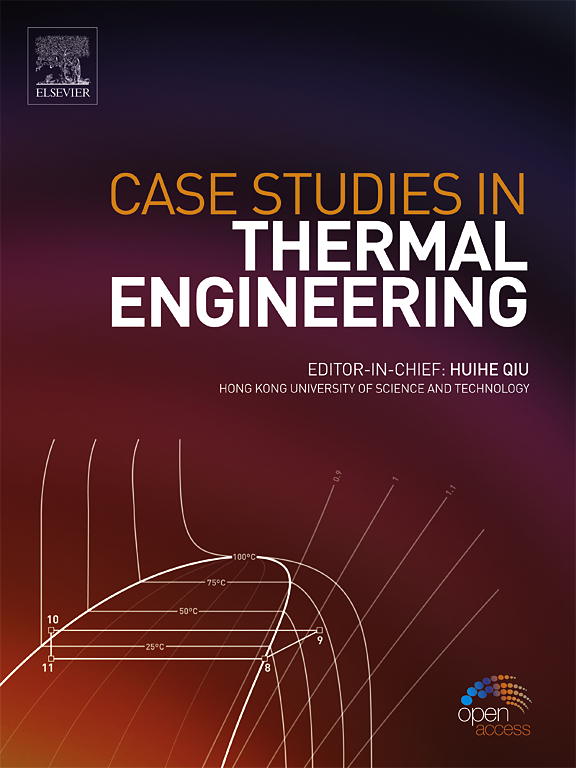Irreversibility Analysis and Thermophoresis Effects on Electro-Thermal Blood Flow in a Diseased Artery: A Thermal Case Study
IF 6.4
2区 工程技术
Q1 THERMODYNAMICS
引用次数: 0
Abstract
This current research explores the numerical solutions of blood flow in a stenotic artery using the Sutterby fluid model to capture the complex rheological behavior of blood. The influence of nanoparticles is incorporated through Buongiorno’s formulation to analyze their effects on flow characteristics. The regulating equations are formulated as a coupled set of partial differential equations, account for nanoparticle dynamics, and are non-dimensionalized under the assumption of mild stenosis. These converted equations are numerically resolved utilizing the finite difference method in MATLAB. A finite difference scheme is employed to achieve computational solutions, enabling the examination of velocity, temperature, mass concentration, entropy production, wall shearing stress, flow rate, and resistance. The findings indicate that an improvement in the thermophoresis parameter enhances blood velocity and significantly affects nanoparticle distribution. Graphical analyses further illustrate the influence of various factors on flow behaviour, providing insights into the interplay between stenosis, nanoparticles, and physiological blood transport. The study contributes to a better understanding of blood flow dynamics in diseased arteries, which may aid in optimizing treatment strategies and biomedical applications.病变动脉中电热血流的不可逆性分析和热泳效应:一个热案例研究
本研究利用Sutterby流体模型探索狭窄动脉血流的数值解,以捕捉血液的复杂流变行为。通过Buongiorno的公式,将纳米颗粒的影响纳入分析其对流动特性的影响。调节方程是一组耦合的偏微分方程,考虑了纳米颗粒的动力学,并且在轻度狭窄的假设下是无量纲化的。在MATLAB中利用有限差分法对转换后的方程进行数值求解。采用有限差分格式来实现计算解,从而可以检查速度、温度、质量浓度、熵产、壁剪切应力、流速和阻力。研究结果表明,热泳参数的改善提高了血液流速,并显著影响了纳米颗粒的分布。图形分析进一步说明了各种因素对血流行为的影响,为狭窄、纳米颗粒和生理血液运输之间的相互作用提供了见解。该研究有助于更好地了解病变动脉的血流动力学,这可能有助于优化治疗策略和生物医学应用。
本文章由计算机程序翻译,如有差异,请以英文原文为准。
求助全文
约1分钟内获得全文
求助全文
来源期刊

Case Studies in Thermal Engineering
Chemical Engineering-Fluid Flow and Transfer Processes
CiteScore
8.60
自引率
11.80%
发文量
812
审稿时长
76 days
期刊介绍:
Case Studies in Thermal Engineering provides a forum for the rapid publication of short, structured Case Studies in Thermal Engineering and related Short Communications. It provides an essential compendium of case studies for researchers and practitioners in the field of thermal engineering and others who are interested in aspects of thermal engineering cases that could affect other engineering processes. The journal not only publishes new and novel case studies, but also provides a forum for the publication of high quality descriptions of classic thermal engineering problems. The scope of the journal includes case studies of thermal engineering problems in components, devices and systems using existing experimental and numerical techniques in the areas of mechanical, aerospace, chemical, medical, thermal management for electronics, heat exchangers, regeneration, solar thermal energy, thermal storage, building energy conservation, and power generation. Case studies of thermal problems in other areas will also be considered.
 求助内容:
求助内容: 应助结果提醒方式:
应助结果提醒方式:


